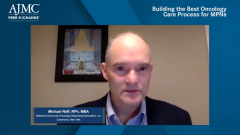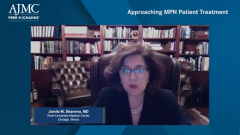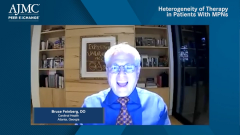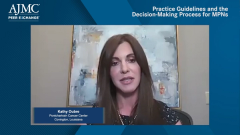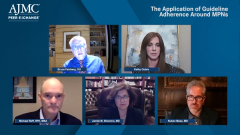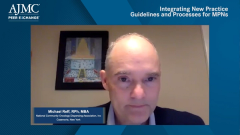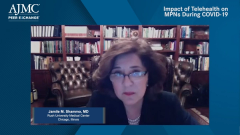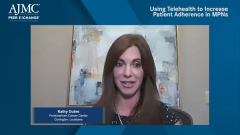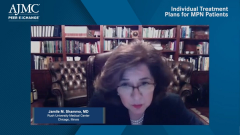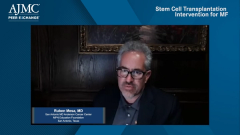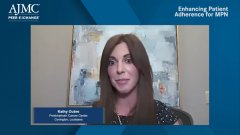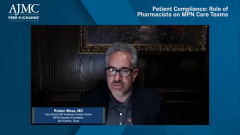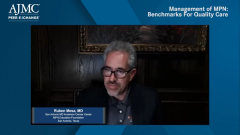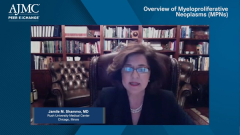
Building the Best Oncology Care Process for MPNs
Kathy Oubre and Michael Reff, RPh, MBA, explain how they built the process and success factors of quality oncology care for MPNs.
Episodes in this series

Bruce Feinberg, DO: As a cancer center director—I should not say that because historically, these diseases are not cancers, so we do not typically think of being a cancer center for those diseases. As those of us know, if you are practicing community oncology, then you are also practicing hematology. If you are practicing hematology, then you are also managing benign hematology, but not all benign hematology is that benign.
The question becomes this: in a practice environment, in an OCM [oncology care model] era with value-based care and shared risk, do these diseases rise to where they start to get looked at by the practice where there are clinical pathways or guideline adherence? There is something more than just the doctors taking care of these patients however they decide to take care of them. At what point are you, at an administrative level, watching the care or treatment of these patients?
Kathy Oubre: I will fall on my sword with that answer. Historically, since we started the company many years ago, the physicians and the nurse practitioners managed these patients on their own; we did not have any type of real framework or metrics around it other than their medical judgement. A couple years ago, my friend and partner in crime Mike Reff over here with NCODA [National Community Oncology Dispensing Association, Inc] developed these positive quality initiatives. One of them was around MPNs [myeloproliferative neoplasms], so we came back as a team after going to an NCODA meeting.
I happen to have one of my newest nurse practitioners and my newest oncology nurse. We were looking down that road at OCM value-based care, and they wanted to take on a project, so we decided that this was a great project for the 2 of them to work on and cut their teeth on, so they did. They pulled everything from NCODA, and they pulled everything they could off the internet, and they developed a great quality program for us. The thing that was most interesting about it is that our physicians do a good job of managing these patients, but we do not see them very often. We might see them every 3, 6 months, and these are the patients who sometimes fall through the cracks. We should not let that happen.
Now that we have this interesting framework around it with adherence, workflows, and pathways, we have seen an increased level of care, better buy-in from all the clinicians within the company and greater patient satisfaction.
Bruce Feinberg, DO: Another by-product of that would be decreased variance: You would see more consistency across the provider sector in terms of how these patients are being managed. With that introduction, Michael, you are going to have to live up to it. You are going to have to explain NCODA [National Community Oncology Dispensing Association] and talk about what you are trying to do.
Michael Reff, RPh, MBA: One thing that Kathy eloquently discussed thoroughly was the whole concept behind a medically integrated oncology practice. By getting her whole team engaged in MPNs in this case and in other disease states that they tackle day-in and day-out, this embraces that concept of medically integrated oncology practice. That is a term that defines NCODA. We are here to help practices care for patients and develop toolsets and resources that help those practices in their aim for better clinical outcomes. It is that framework of having that structure around a truly medically integrated oncology practice that Kathy described perfectly.
Bruce Feinberg, DO: When you initially created it, were MPNs on the list, or were they targeted as low-hanging fruit because you saw a lot of variance or you saw greater opportunity? How did MPNs work their way into that?
Michael Reff, RPh, MBA: MPNs worked their way in.
Kathy Oubre: For us, it was that low-hanging fruit because it was something that those 2 newest people could wrap their hands around. If they were trying to develop a whole colon cancer pathway program of total care, that is a much larger area to wrap your hands around. We decided to start small and build from there. Mike, is that what you see within the NCODA membership?
Michael Reff, RPh, MBA: You do. Of course, you do not want to try to boil the ocean all at once. By looking at those that we described as low-hanging fruit, it is an easier way to get your legs under you as you are rolling these concepts out across a practice. You then start tackling bigger therapeutic areas as needed, but it is about engaging that whole care team to have responsibility for that patient, and that is what Kathy was describing.
It is the awareness of the opportunity, taking a look at the tool that we created at NCODA, which was the positive quality intervention that we started with MPNs. It is the education around that and around the disease. It is having somebody at the practice take a leadership role, which Kathy talked about with the new nurse practitioner and nurse taking this on and the leadership getting behind it. It is then taking a look at the quality initiative itself: What exactly is the element that we are trying to impact? That is the positive quality intervention. What is the intervention part of that initiative? And then developing that culture of positive change. When you get the endorsement from the CEO [chief executive officer] of the practice to tackle something, then you certainly have that culture of “Let’s work on this together, and we will roll this out successfully” because you have buy-in from the top down.
Bruce Feinberg, DO: I want to bring the doctors back in. Jamile, I do not know how familiar you are with this, but whether you are familiar or not, when you hear about something like that, does it sound like something you are already doing? Is it something you or your patients would benefit from doing? What is your take?
Jamile M. Shammo, MD: It sounds interesting because patients who have MPNs often feel as if they are not being paid attention to as much as they would like to be. They often feel they do not get the attention they deserve. To the point that was brought up, they do not get seen as frequently as many other patients who have hematologic malignancies get seen.
If I were to think of adopting something like this at our section [at Rush University Medical Center], we do not have a similar program, but it would probably be worthwhile to have a pilot program like this to see some of the positive impacts of it on patients and how they would receive it. We try to do the best we can with our patients to do all the end points in the clinical team that we have, but we are also looking to see if improving quality of life for patients would be a huge endeavor with patients like those in this group.
Transcript edited for clarity.
Newsletter
Stay ahead of policy, cost, and value—subscribe to AJMC for expert insights at the intersection of clinical care and health economics.


